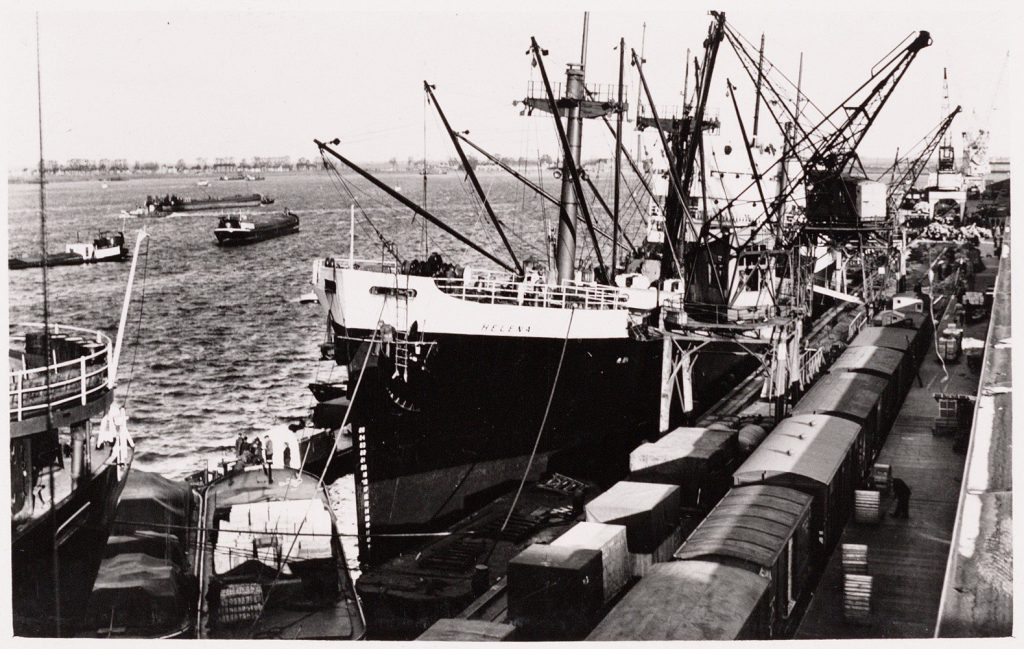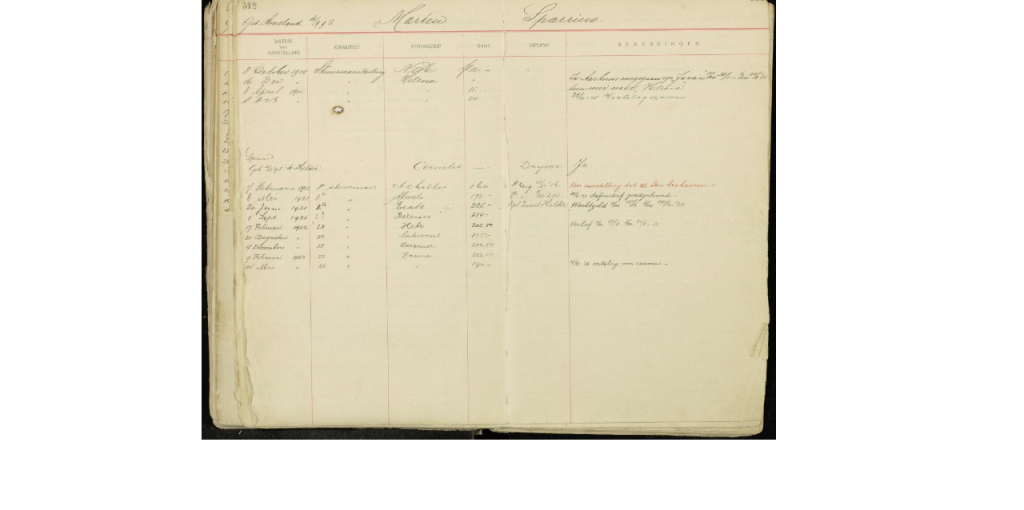Sailors on Dutch merchant marine in the 19th and 20th centuries
Who worked on board of Dutch merchant marine ships in the 19th and 20th centuries? Where did the sailors come from, what was their education, how did they proceed through the ranks? We will find answers to these questions in personnel records of various Dutch shipping companies. In this project (2019-2023), we will then identify patterns in these data, and compare these to the 18th-century data from the HUMIGEC and Prize Paper projects, and analyse what transitions in crew composition meant for the people directly involved, the shipping sector, and, more broadly, its position in Dutch society and culture.

Archival research
Original archival research forms the main pillar of this project. In the following, we will explain about our selection of sources, methodology and GDPR compliance.
Sources
At the start of the project, we identified the major shipping companies in the Netherlands from ca. 1850 to 2000. While some of these continue to operate even today, the majority had gone defunct sometime in the late 20th or early 21st century. As a result of various mergers and takeovers in the sector, locating the company archives proved easier than initially expected: the archival collections of a limited number of key shipping companies contain the files of many predecessors. Most companies operated either from Amsterdam or Rotterdam and many of its archives were donated to the City Archives in both cities.
Considering the need to document similar data it is unsurprising that companies all turned to cardboard personnel cards and extensive registers to keep track of its employees. The data recorded per individual was relatively similar across the sector with only minor variations between companies and within companies over time. Fortunately, the recording of basic personal information (name, date and place of birth, education) remained constant. Also, each company recorded the rank and salary of its crew members for each voyage they made.
GDPR
Since the archives stretch well into the 20th century, they contain many personal data of persons that may still be alive, so we have to comply with the European General Data Protection Regulation (GDPR). This means that we will anonymise large part of the final dataset in order to protect rights of persons described in it who are still alive. When we mention identifiable persons (on this blog or elsewhere), we have always made sure that they have deceased.
KNSM sample
Project researcher Daniël Tuik has started collecting data on sailors in the files of the Koninklijke Nederlandse Stoomboot-Maatschappij (KNSM), a company that operated mainly from Amsterdam between 1856 and 1981, although the earliest surviving personnel files date to 1881. He takes a sample of all sailors whose last names starts with ‘L’-totaling some 1,500 persons.
Establishing whether the sources contain data on all crew members whose name starts with ‘L’ proved difficult. Prior to World War II the KNSM used sequential registers for officers and cards for the other crew. After the war the card system was expanded to also include officers. While crew were given an identifying number, the cards themselves were sorted alphabetically. Unfortunately the sheer size (329 boxes containing ca. 100 cards each) makes it virtually impossible to check for any missing numbers. Within our sample however we did not encounter any unexplainable gaps in careers. Overall clerks seem to have done an excellent job of keeping track. The only exception to this is World War II and its immediate aftermath during which listed voyages are often incomplete or missing at all. There is a separate card system for crew serving on ships under Allied command, but this suffers from the same issues.

Compared to the age of sail voyages in the age of steam were much shorter. As a result of this sailors could sail on hundreds of voyages during their careers, some being as short as a day. During the research we noticed that recording everything was neither feasible nor relevant. We therefore decided to only a sailor’s first and last voyages and those voyages in which he attained a different rank.
Publications and dataset
This project will result in a book (narrative history, in Dutch) about the role and position of the shipping sector and its sailors in Dutch society, one or several academic articles on various aspects of the maritime labour market and a publicly accessible data set on sailors of the Dutch merchant marine.
Funding
Grant awarded by the Samenwerkende Maritieme Fondsen (SMF)